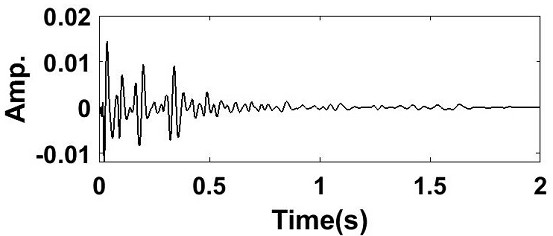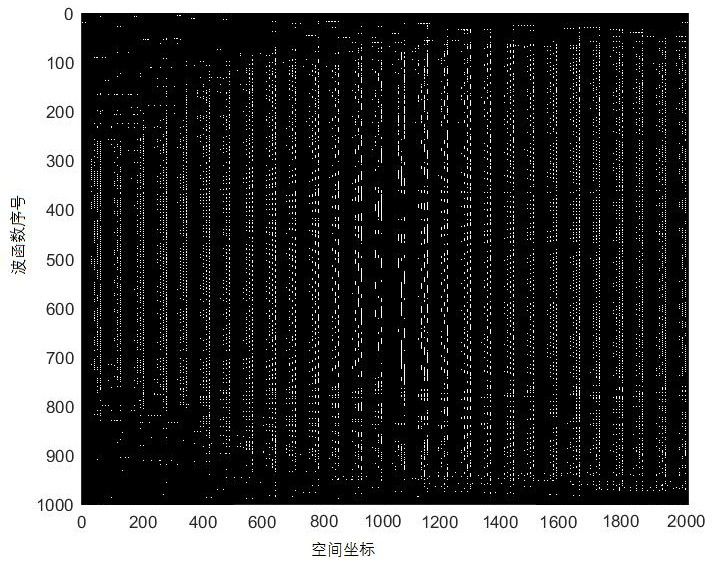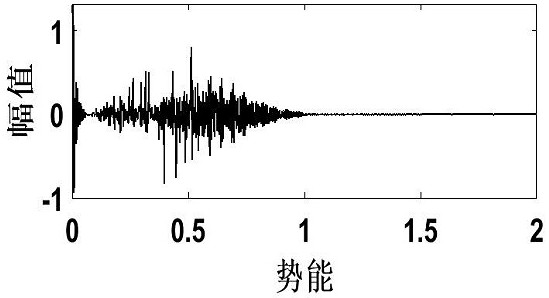Potential energy wave function domain seismic data quality factor estimation method
A technology of quality factor and seismic data, applied in the field of geophysical processing of oil and gas exploration, can solve the problems of affecting accuracy, cumbersome, difficult amplitude information, etc., to achieve the effect of fast operation and improved accuracy
- Summary
- Abstract
- Description
- Claims
- Application Information
AI Technical Summary
Problems solved by technology
Method used
Image
Examples
Embodiment Construction
[0052] (1) figure 1 It is the seismic synthetic record used for formation quality factor calculation. Seismic synthetic records were generated using minimum phase wavelets, with a theoretical quality factor of 30 and a sampling frequency of 500 Hz.
[0053] (2) figure 2 Shown for the potential-wavefunction domain wavefunction. Planck's constant is taken as 1. A total of 2000 wave functions were generated from the synthetic seismogram.
[0054] (3) image 3 Maps the signal to the potential-wavefunction domain of the raw seismic signal.
[0055] (4) Figure 4 is the fitted curve for Q estimation using this technique. The least squares method was used to fit the logarithmic mapping sequence within the preferred range, the slope of the fitted line obtained was 5.7497, and the calculated Q value was 26.
[0056] (5) Figure 5 To estimate Q for this seismic record using the conventional spectral ratio method. (a) The time-frequency spectrum of the seismic record. (b)...
PUM
 Login to View More
Login to View More Abstract
Description
Claims
Application Information
 Login to View More
Login to View More - R&D
- Intellectual Property
- Life Sciences
- Materials
- Tech Scout
- Unparalleled Data Quality
- Higher Quality Content
- 60% Fewer Hallucinations
Browse by: Latest US Patents, China's latest patents, Technical Efficacy Thesaurus, Application Domain, Technology Topic, Popular Technical Reports.
© 2025 PatSnap. All rights reserved.Legal|Privacy policy|Modern Slavery Act Transparency Statement|Sitemap|About US| Contact US: help@patsnap.com



